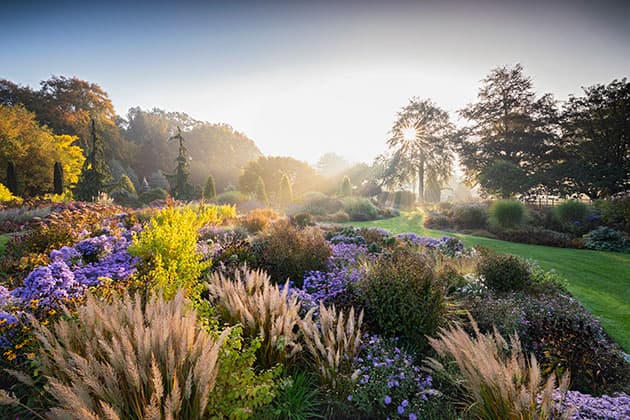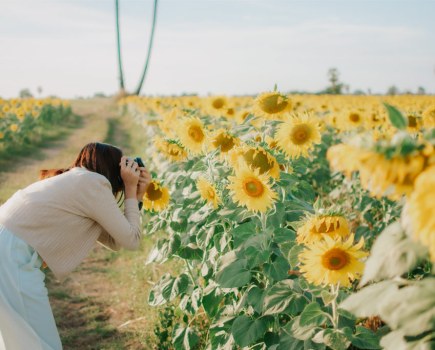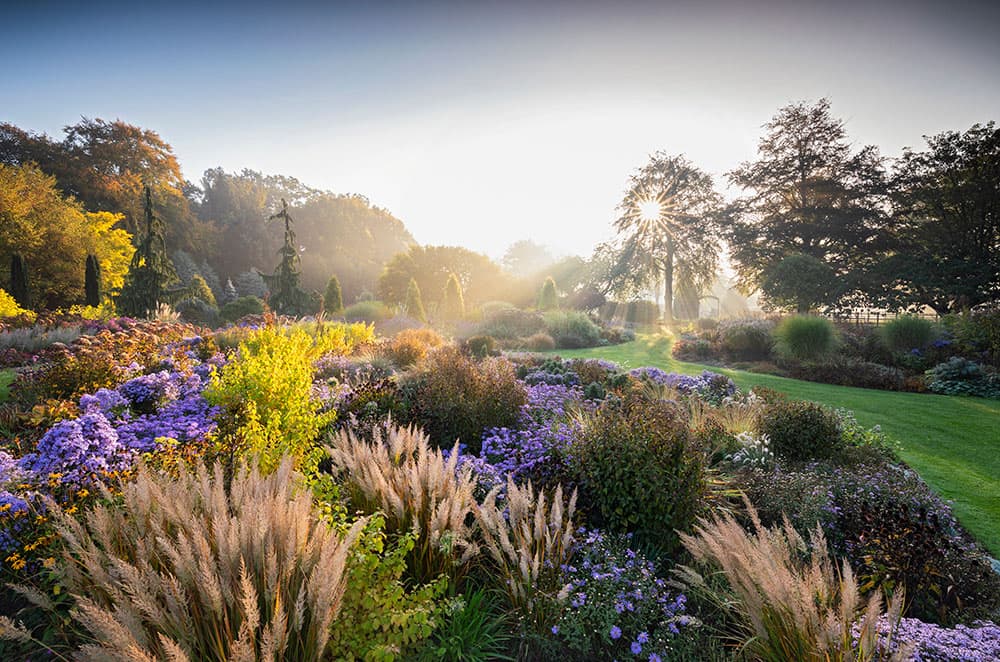
Canon EOS 5D Mark IV, 16-35mm, 1/4sec at f/16, ISO 100. Credit: Richard Bloom/WWW.IGPOTY.COM
After another successful year, we celebrate the winning images from the 12th International Garden Photographer of the Year competition (IGPOTY).
IGPOTY continues to be the world’s most prestigious global competition for garden and plant photographers of all ages, amateurs and professionals alike. With over 19,000 entries from 50 countries, the results this year are truly stunning. From botanical close-ups to garden wildlife portraiture and wide floral vistas, the competition continues to push the boundaries of this spectacular genre.
Bressingham Gardens in Autumn – Richard Bloom, UK (picture above)
Beautiful Gardens – 1st Place
I took this at The Bressingham Gardens in Norfolk, a location that is local to me, so I am very familiar with it and therefore had a good idea of where I needed to be for sunrise. The image is backlit for drama and atmosphere and shot from a ladder with a wideangle lens. I wanted to capture sufficient foreground-to- background interest. Ornamental grasses are featured with swathes of aster and Rudbeckia.
Richard’s tips
- Be prepared. Scout the location first, work out where the sun will rise and where your best position will be, and check the weather forecast. Arrive early, before sunrise, so you have enough time to set up and wait.
- If shooting into the sun, it needs to be low in the sky and ideally filtered through trees.
- Consider an elevated position to get more of an overview of the garden.
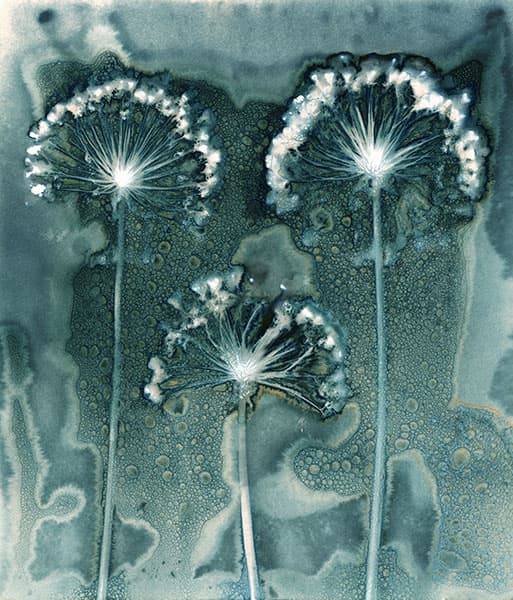
Wet cyanotype, 4-hour exposure. Credit: Jill Welham/WWW.IGPOTY.COM
Fireworks – Jill Welham, UK
Overall winner and Abstract Views – 1st Place
I made this image in my garden in North Yorkshire using an analogue technique called wet cyanotype. This is a variation of the Victorian method of cyanotype where blue and white images are created using light-sensitive chemicals without a camera.
The chemical reaction produces interesting fluid patterns and colours that are not normally present in a traditional cyanotype print. The resulting pieces are unique and present botanical prints in a different and painterly manner. Each piece is created with plants and flowers from my own garden and this particular image was exposed for approximately four hours in July last year when we had lovely hot sunshine.
Jill’s tips
- Leave your camera in the bag and try an alternative method of creating a photograph. Cyanotype is a simple and inexpensive process. All you need is watercolour paper and the necessary chemicals (or pre-treated paper can be bought), an old picture frame, some bulldog clips, leaves or flowers, and sunshine.
- Stay at home – you don’t need to venture to exotic locations to create interesting and unique images. Plants from your garden or flowers purchased from your local florist can all make interesting subjects. Take time to look at what is growing around you and how it changes through the seasons.
- Take your time: cyanotype prints require long exposures. In the height of summer when UV levels are high, a normal cyanotype takes a few minutes to expose. Wet cyanotypes need to be exposed for several hours. In winter on sunny days exposures are still possible but sometimes take several days.

Canon EOS 5D Mark II, 24-70mm, 1/20sec at f/14, ISO 400. Credit: Manuela Göhner/WWW.IGPOTY.COM
Early Cold Morning – Manuela Göhner, Germany
European Garden Photography Award – 2nd Place
During one of the first cold mornings of the winter I went to the garden and found this glowing volatile moment. Light frost emphasised the illuminated tips of Echinops, Anaphalis and Pennisetum. The plants’ different textures impart the beautiful charm of this season.
Manuela’s tips
- Compose your picture. Fill your frame with elements that are essential to your picture and try different perspectives. Use the design of the garden and search for shapes and lines to make your composition.
- A tripod is necessary to compose your picture carefully and to steady the camera for long exposure in low-light situations.
- Garden photography is dependent on the weather. Wind, sun and rain are against you. Be patient and catch the right moment.
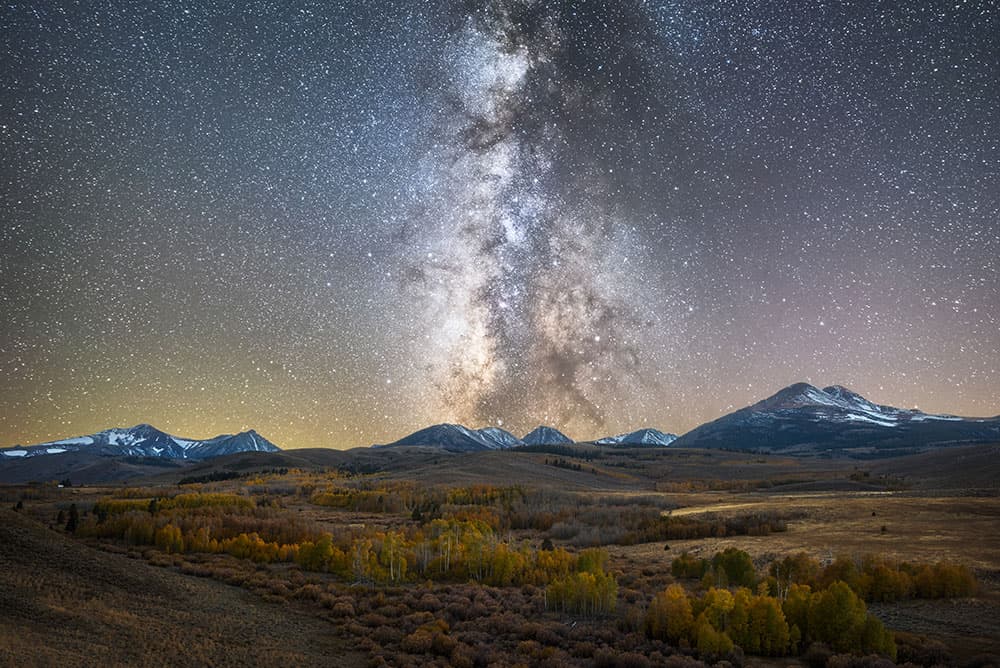
Nikon D750, 24-120mm, 1/6sec at f/11, ISO 50. Credit: Brandon Yoshizawa/WWW.IGPOTY.COM
Stars Over Conway – Brandon Yoshizawa, USA
Breathing Spaces – Finalist
I love photographing autumn colours and I love astrophotography, so combining them is a dream shot. I came out to Conway Summit in the Eastern Sierras to capture them in a dramatic fashion.
Brandon’s tips
- Understand when and where the Milky Way will be visible given your location, time of year, and time of day. I use a free app called Stellarium to help me plan Milky Way alignment and then Google map/earth to help me sync it with my landscape.
- Follow the rule of 500 to get a baseline exposure time to avoid trailing stars due to the earth’s rotation. If the landscape is too dark, take a separate foreground shot using a longer exposure and blend them in post-processing, or use a light source to light paint your foreground during exposure.
- Invest in a fast lens, preferably one that opens aperture to f/2.8, and a camera body that handles high ISO noise, as you could be shooting from ISO 3200 to 6400.

Nikon D810, 105mm, 1/640sec at f/3.3, ISO 250. Credit: Janina Jackson/WWW.IGPOTY.COM
Roadside Lace – Janina Jackson, Australia
The Beauty of Plants – Finalist
Queen Anne’s Lace is a common weed also known as wild carrot, that is found throughout Australia. It’s spread along the roadside in abundance where I live and I loved the challenge of capturing its beauty. Up close, it is intricate, unique and beautifully designed by nature.
Janina’s tips
- Get up close and observe the intricacies and details. Look for beauty in all plants even the weeds.
- Walk around the subject and look for the best angle to shoot from. Look from above and from below. Check for distracting elements in the frame such as twigs and grasses.
- Always observe the way the light falls on the subject and where the shadows are. I try to shoot early in the morning or in the late afternoon.
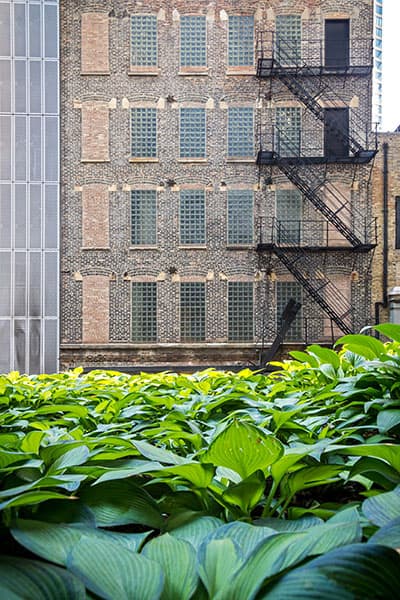
Canon EOS 1200D, 17-85mm, 1/5sec at f/11, ISO 100. Credit: Joel Porterfield/WWW.IGPOTY.COM
Carroll Avenue Greens – Joel Porterfield, USA
Greening The City – 2nd Place
Carroll Avenue is an abandoned below-grade rail line that runs through downtown Chicago. I happened to be walking above it one day and the old brick building caught my attention. From the low perspective in the photo you can’t see the below-grade road, which makes it appear that the building is emerging directly from the greenery.
Joel’s tips
- Nature photography shouldn’t just be limited to national parks and open spaces. It can be found in urban areas too, whether it be city plantings, gardens, parks, abandoned lots, or your backyard. If you’re observant you can find it in the least expected places.
- In urban nature photography I often like to give the natural element a more prominent presence in the composition compared to the built environment. Doing so can capture your audience’s attention by giving them a view of the city that they aren’t used to seeing.

Canon EOS 5D Mark III, 150mm, 1/200sec at f/2.8, ISO 640. Credit: Melchiorre Pizzitola/WWW.IGPOTY.COM
Mantis – Melchiorre Pizzitola, Italy
Wildlife in the Garden – Finalist
I was on holiday in Sardinia in August and during the hottest hours of the day I came across this mantis hunting for prey lying on some succulent plantsin the garden. I wanted to capture something a bit different and decided to set the maximum aperture to focus purely on the head.
Melchiorre’s tips
- To achieve a very shallow depth of field, set a wide aperture such as f/2.8, lie down to ensure you’re positioned along the same focal plane, and get in close.
- When photographing wildlife and nature ensure you take your photo with minimal disturbance. Do not move your subject; simply observe.
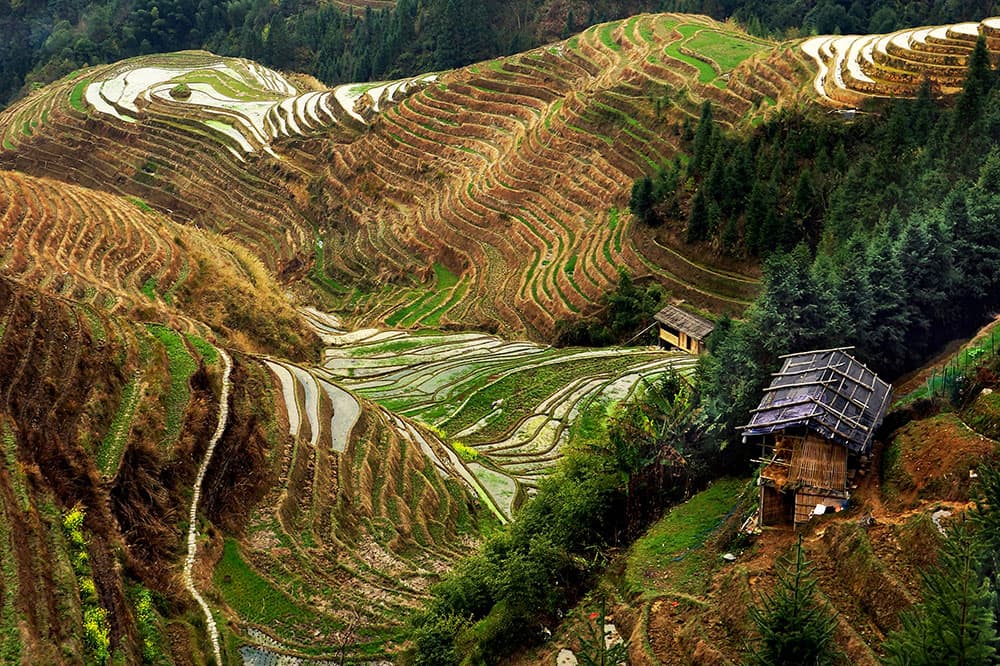
Sony NEX-7, 18-55mm, 1/640sec at f/6.3, ISO 200. Credit: Gloria King/WWW.IGPOTY.COM
Longji Rice Terraces – Gloria King, Canada
The Bountiful Earth – Commended
I joined a tour group to see the spectacular rice terraces in China, where rice is cultivated on the mountain slopes. This particular set of terraces is also known as Dragon’s Backbone. It was approximately a half-day tour, including hiking up to the upper view levels. In these circumstances, one has to make the best of the time.
Gloria’s tips
- It was a cloudy day, with changing, but even, light. In situations like this, to deal with the changing light conditions, set the camera to aperture priority. That way the camera will automatically adjust the shutter speed. To avoid a slow shutter speed being selected, it’s also worth increasing the ISO.
- When composing a landscape, look for colour, balance, lines and focal points, and follow the rule of thirds. In this image, the repetitive lines of the terraces give the image a lovely rhythm as well as texture. The structure on the right side, placed following the rule-of- thirds, also provides a balance with the forms of the mountains. These are guidelines that help to compose a picture, but if some or all of these elements are not obvious, shoot anyway, especially if time is of the essence.

Nikon D750, 24-85mm, 0.4sec at f/14, ISO 100. Credit: Simon Lea/WWW.IGPOTY.COM
Blood-Red Poppies – Simon Lea, UK
Wildflower Landscapes – Highly Commended
I woke up at 3.15am for the 40-minute drive to Kingswinford, just outside Birmingham. I’d just finished setting up the camera when the sun, and then a layer of mist, began to appear. The golden sunrise light shone through the mist, making the poppies glow. It was truly a breathtaking experience.
Simon’s tips
- Sunrise in the summer is horribly early, so prepare the night before, including charging camera batteries, checking camera settings and packing all the essentials.
- If you can, scope out your location in advance so you know where parking and access are. You don’t want to be trying to figure these issues out when it’s dark and you’re tired and panicking about missing the sunrise.
- Don’t forget to enjoy the moment! Stop, take your eyes away from the viewfinder, look around, breathe and take the view in. Photographs are great – but don’t forget to live the experience.

Olympus OM-D E-M1, 40-150mm, 1/1250sec at f/2.8, ISO 200. Credit: Dick Hawkes/WWW.IGPOTY.COM
Snowing on the Great Broad Walk – Dick Hawkes, UK
Captured at Kew – 3rd Place
Extreme cold weather in March provided a perfect opportunity to see The Great Broad Walk Borders in a different light. The aim was to capture the falling snow with a fast shutter speed. The muted colours and barely visible footprints added to the wintry scene.
Dick’s Tips
- Set a fast shutter speed (1/1250sec) to capture the effect of individual snowflakes rather than streaks.
- In snow scenes, the camera’s auto exposure has to compensate so some texture remains, such as the faint trails.
- While maintaining the muted winter feeling, in such dull lighting conditions the vegetation may benefit from the colour being boosted in post-production.

